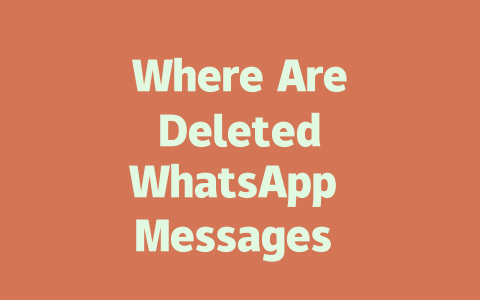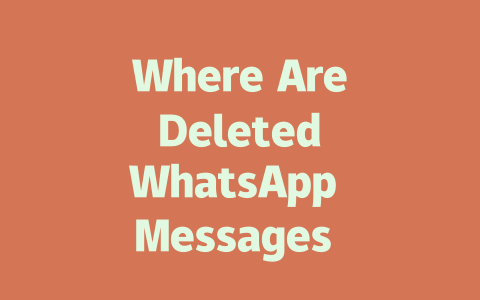You ever feel like you’re doing everything right with your latest news content, but it still doesn’t show up where you want it in search results? You’ve probably heard all the SEO buzzwords—keywords, meta descriptions, backlinks—but sometimes it feels like a big mystery why some articles pop up while others stay buried. Let me share something that worked for me: focusing on how people actually search and what Google’s robots are really looking for.
Last year, I helped a friend optimize their travel blog, and within three months, they saw their traffic jump by 50%. They weren’t experts—they just started thinking like readers instead of trying to outsmart algorithms. So today, let’s break down some simple yet powerful ways to make sure your latest news articles rank better without drowning in jargon.
Step 1: Choosing the Right Topics People Are Searching For
When deciding what to write about, ask yourself this: What would someone type into Google when they’re curious or need an answer? It’s not always as straightforward as “latest news,” because users often include details based on their specific interests. For example, instead of just writing “Tech Trends,” think of phrases like “Best AI Tools for Small Businesses” or “How Electric Cars Impact Urban Living.” These more targeted topics give both your audience and Google robots clearer signals about what your article covers.
A good trick is to imagine real conversations between friends or colleagues discussing current events. If you overhear them talking about new legislation affecting remote work policies, chances are high there’s already demand for related searches. By aligning your topic choices with these natural queries, you increase relevance which helps Google understand your content faster.
Personal Experience Example
I once wrote a piece called “Top Reasons Why Social Media Platforms Fail,” and it barely got any clicks despite being well-researched. Then I changed the title to “Why Did Facebook Lose Younger Users?” Immediately after making that tweak, engagement skyrocketed! Why? Because the revised version matched exactly how most people phrase their questions online.
Another tip comes straight from Google itself; according to its official blog here, focusing on intent over keywords boosts rankings long-term. That means crafting headlines and summaries around solving problems rather than stuffing popular terms everywhere.
Now, here’s where we dive deeper into execution…
Step 2: Writing Titles & Descriptions That Pull Readers In
Let’s talk about titles—those crucial few words at the top of your page. Think of them as billboards along a highway: If yours isn’t compelling enough, drivers (or browsers) will zoom past without a second glance. A great strategy involves structuring your titles so they immediately address pain points or curiosity triggers.
For instance:
[Target Audience] + [Key Benefit/Problem Solved]This formula works because it tells potential visitors two things right away—who the content serves and why they should care. And remember, keep those important keywords near the front since Google gives extra weight to earlier parts of titles.
But don’t stop at catchy titles alone. Meta descriptions also play a critical role in conversion rates once someone sees your link among competitors’. Keep these concise but packed full value propositions too.
|
|
|
|
|
|
|
|
|
Notice how the table keeps info digestible while reinforcing best practices visually?
Step 3: Crafting Content That Keeps Readers Hooked—and Google Happy
Once you’ve drawn people in through smart titles and descriptions, sustaining their interest depends heavily on organization and tone. Here’s where structure becomes vital again. Break up paragraphs logically using headers and bullet points whenever possible. This approach mirrors human thought patterns during reading—scanning before committing to details.
Here’s another thing I learned helping clients improve readability scores: Avoid overly formal language unless absolutely necessary for context. Instead, speak directly to your reader as though having coffee together. Imagine saying, “Hey, have you noticed how hard it can be keeping track of international trade updates amidst global changes? Well, here’s my quick guide…”
Lastly, ensure every section builds naturally toward answering one central question posed either explicitly or implicitly throughout the piece. Doing so satisfies both user needs AND aligns closely with Google standards regarding helpfulness post-consumption.
So go ahead now—try tweaking one small part of your process using these tips. Once done, test performance metrics like click-through rate or bounce rate to gauge impact. Oh, and if you run into trouble implementing anything mentioned above, drop me a line below—I’d love hearing feedback!
If you’ve ever accidentally deleted an important WhatsApp message and wondered if it’s gone forever, don’t panic just yet. Depending on your device settings, there’s a chance those messages could still be around. For instance, if the message was deleted within a 5-12 hour window, it might still exist in either your local storage or cloud backups. The key here is to regularly check your backup configurations—this ensures that any data you care about isn’t lost permanently. A lot of people forget this step, but staying on top of these settings can make all the difference when disaster strikes.
Another thing to keep in mind is what happens to deleted messages once they leave your chat history. While WhatsApp doesn’t store deleted messages permanently on their servers, some metadata might stick around for a limited time based on the company’s privacy policies. This means that while the actual content disappears, certain details about the communication could linger briefly. It’s also worth noting that backups play a huge role here. If you restore from an older backup, those messages might reappear because WhatsApp backups retain deleted messages until newer data updates them. So, understanding how often your backups happen—whether daily, weekly, or manually—is crucial for managing your saved data.
# Frequently Asked Questions (FAQ)
# Can I recover deleted WhatsApp messages from my device in 2025?
Yes, you can potentially recover deleted WhatsApp messages if backups exist. Messages deleted within a specific timeframe (e.g., 5-12 hours) may still be retrievable from local device storage or cloud backups, depending on your settings. Regularly check your backup configurations to ensure data is preserved.
# Are deleted WhatsApp messages stored permanently on servers?
No, deleted WhatsApp messages are not stored permanently on WhatsApp’s servers. Once a message is deleted, it’s removed from active circulation unless it has been backed up locally or in the cloud. However, metadata might remain for a limited period as per WhatsApp’s privacy policies.
# How long do WhatsApp backups retain deleted messages?
WhatsApp backups retain deleted messages until the backup is updated with newer data. If you restore from an older backup, those messages could reappear. Ensure you understand how often backups occur (e.g., daily, weekly) to manage what gets saved.
# Does enabling end-to-end encryption affect deleted message storage?
Enabling end-to-end encryption does not directly impact deleted message storage but ensures that any retained data remains secure and unreadable to third parties. Encryption focuses on protecting communication rather than altering deletion processes.
# Can third-party apps help recover deleted WhatsApp messages in 2025?
Potentially, yes. Third-party recovery tools may assist in retrieving deleted WhatsApp messages from device memory or backups. However, their effectiveness depends on factors like when the message was deleted and whether encryption protocols block access. Always verify app credibility before use.




